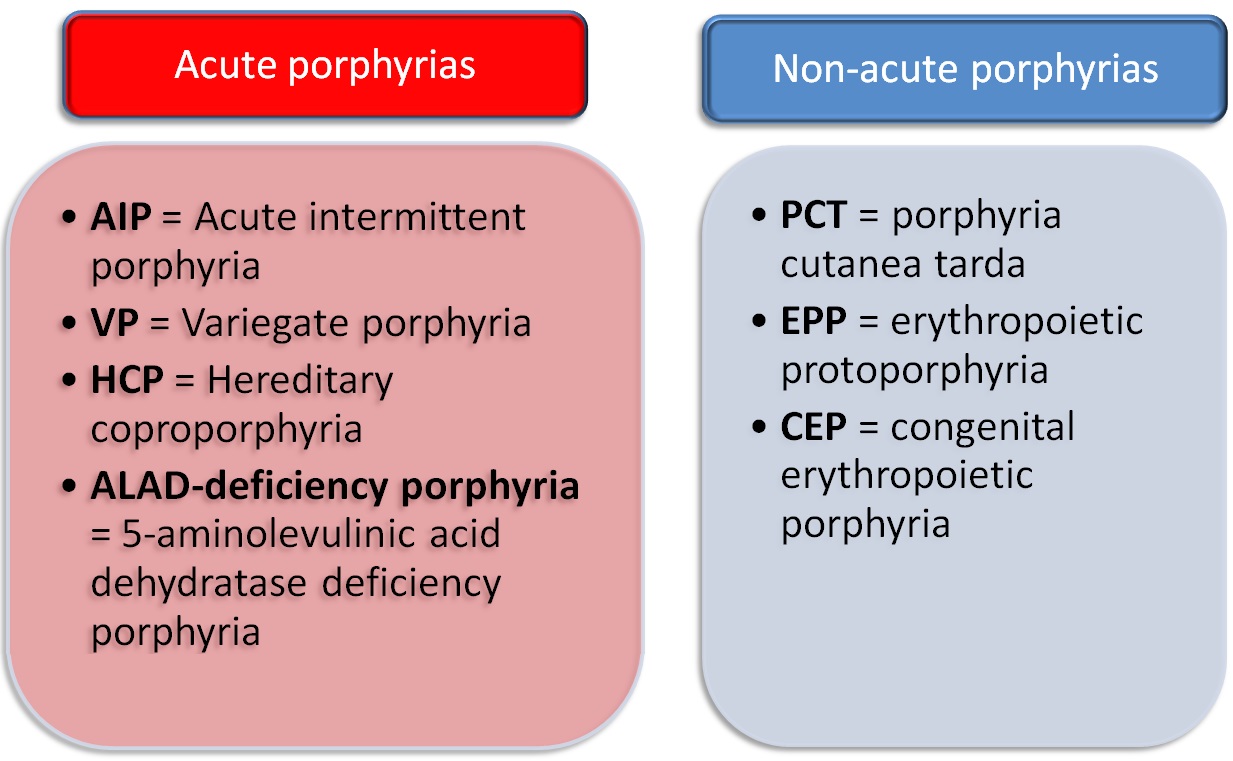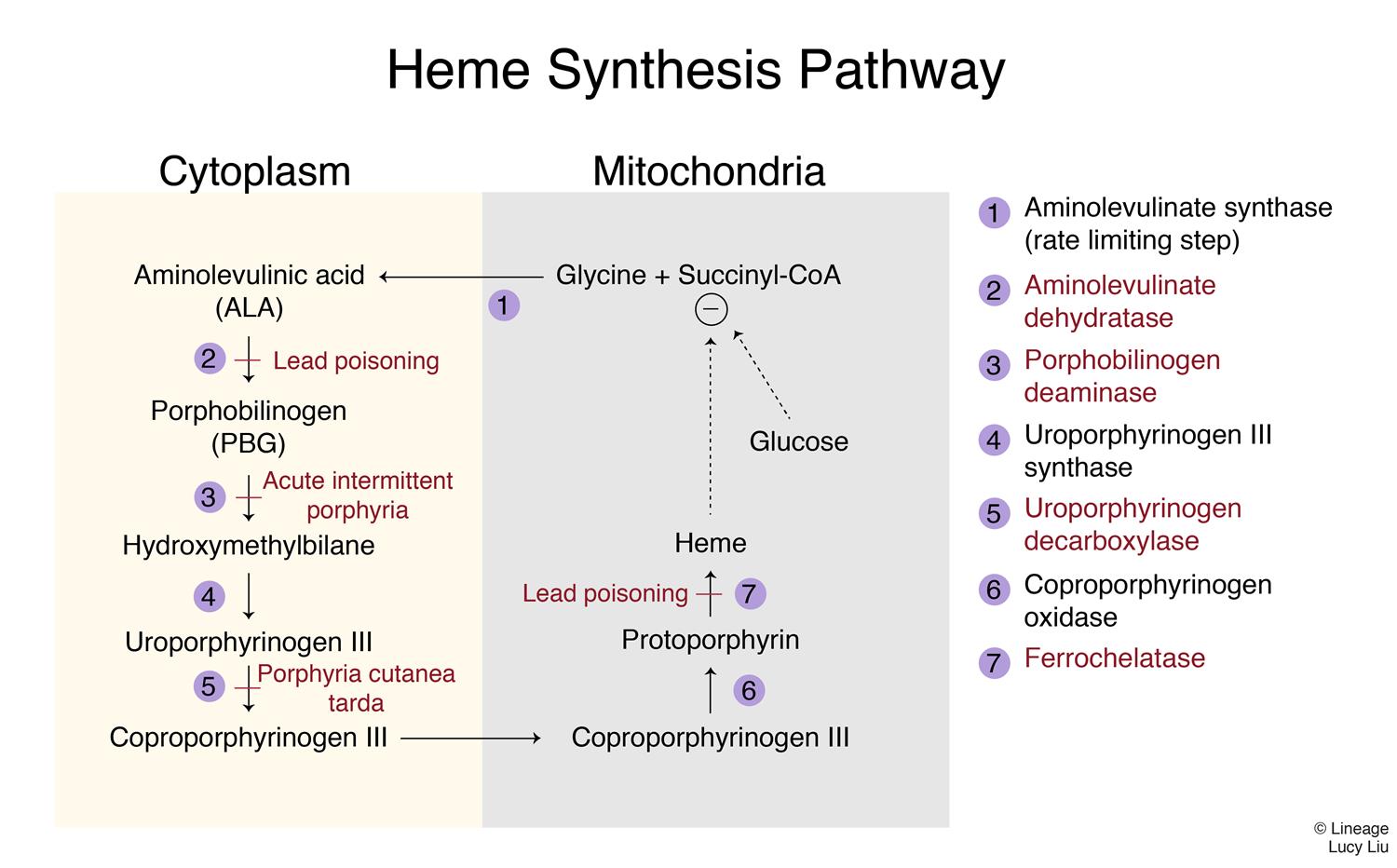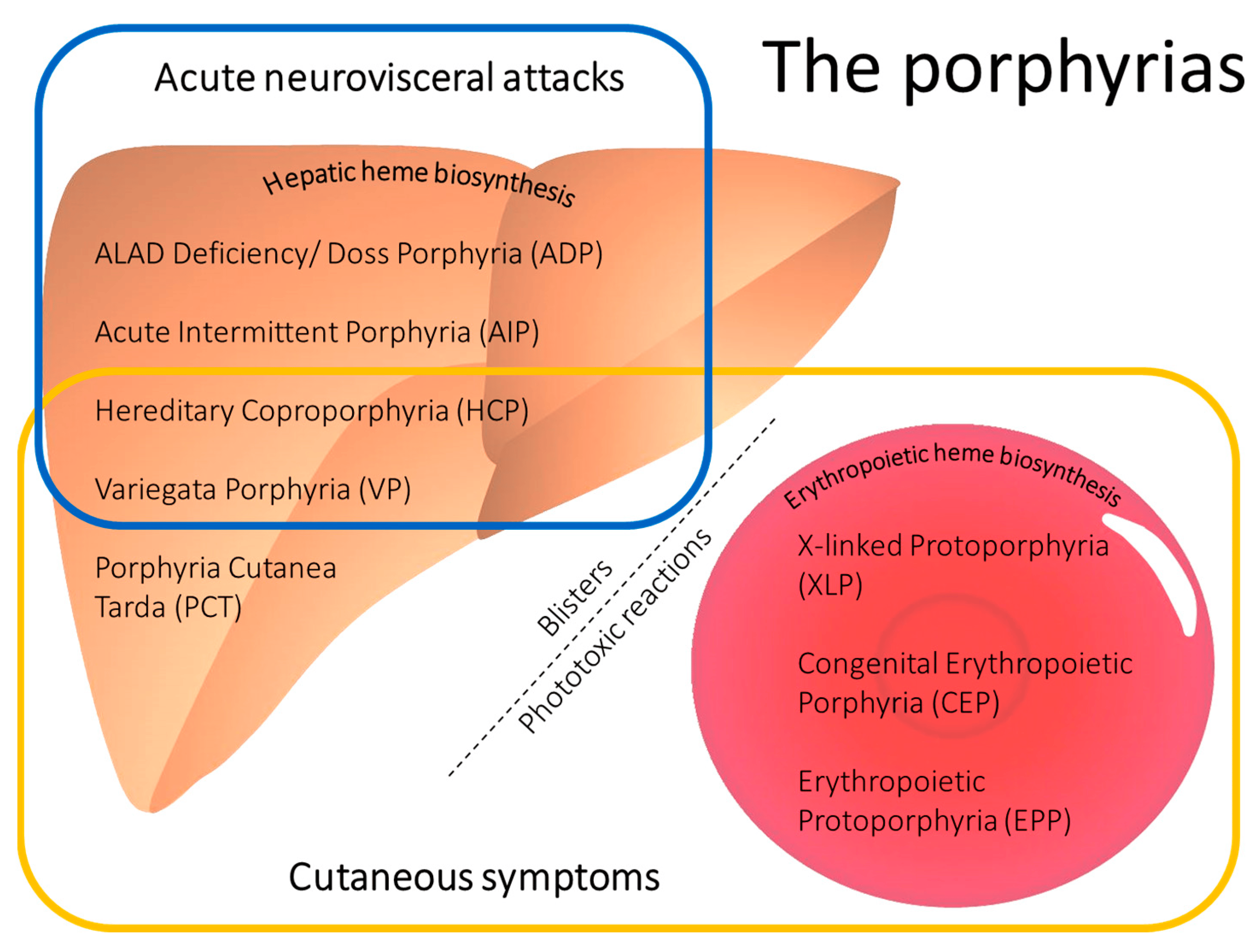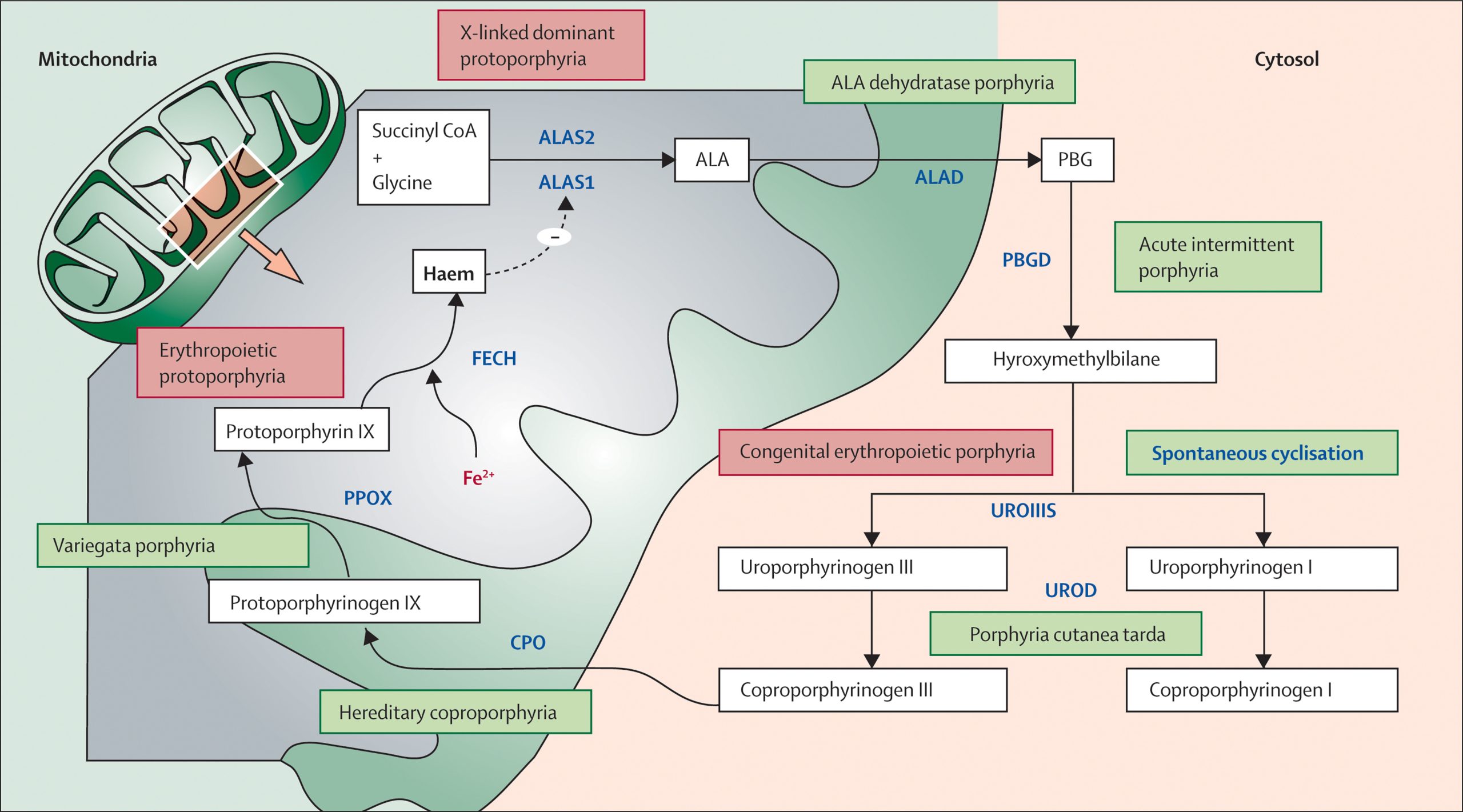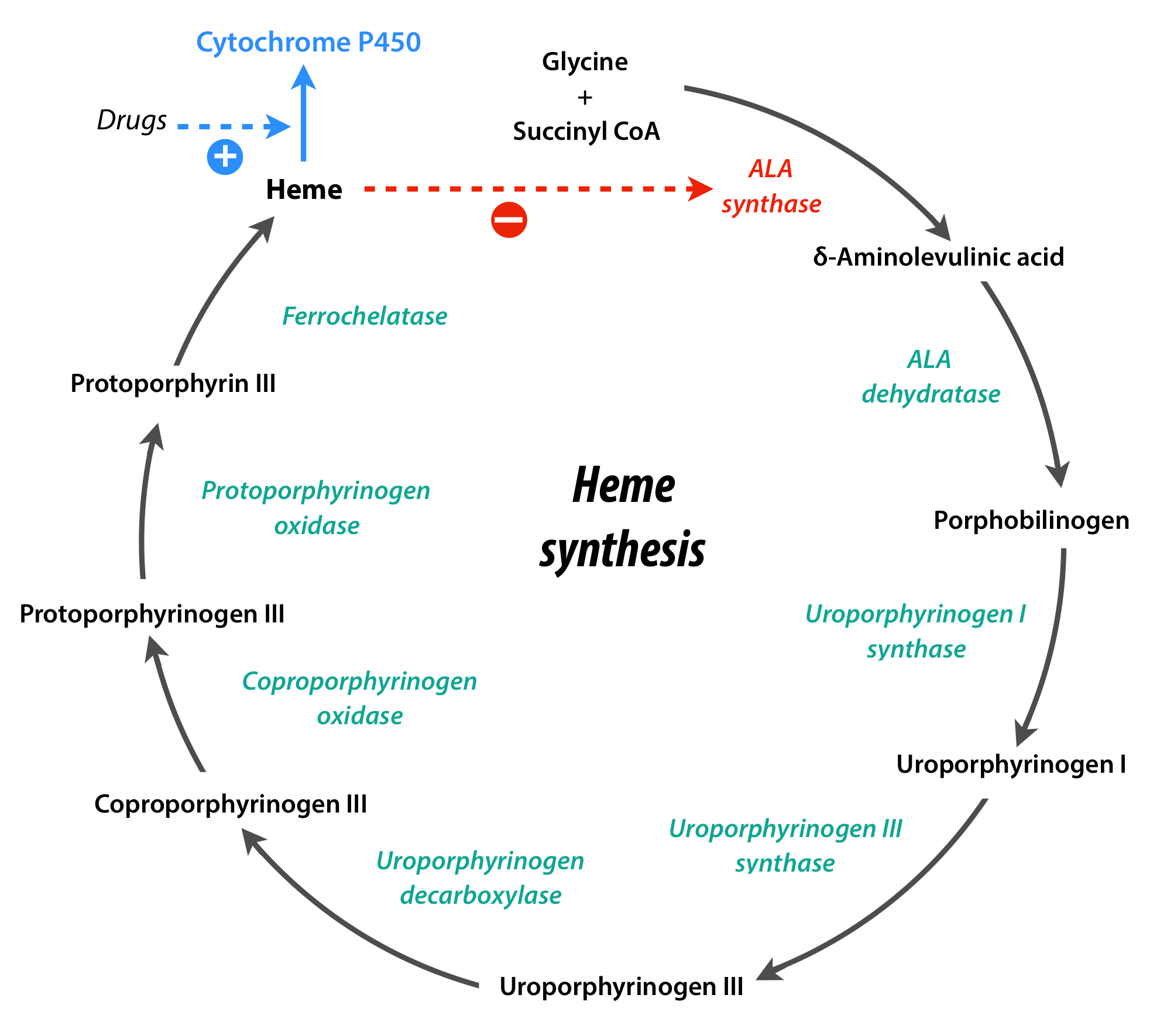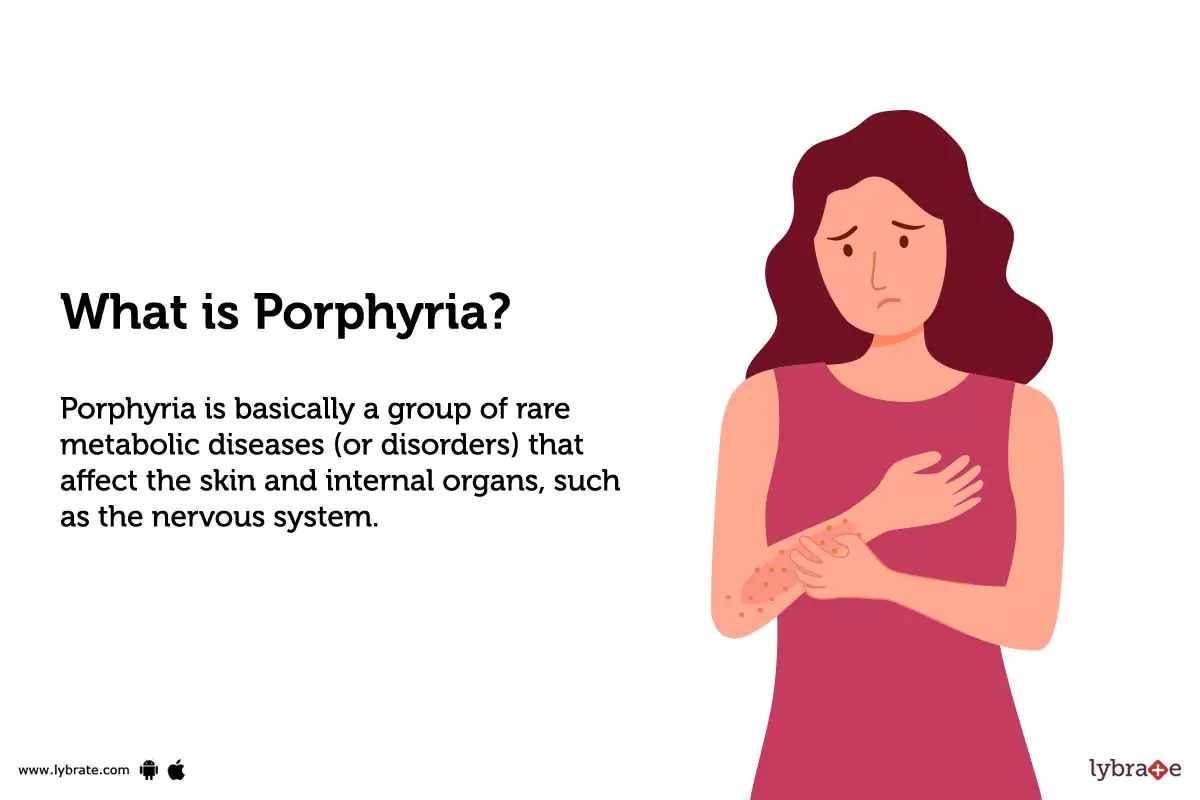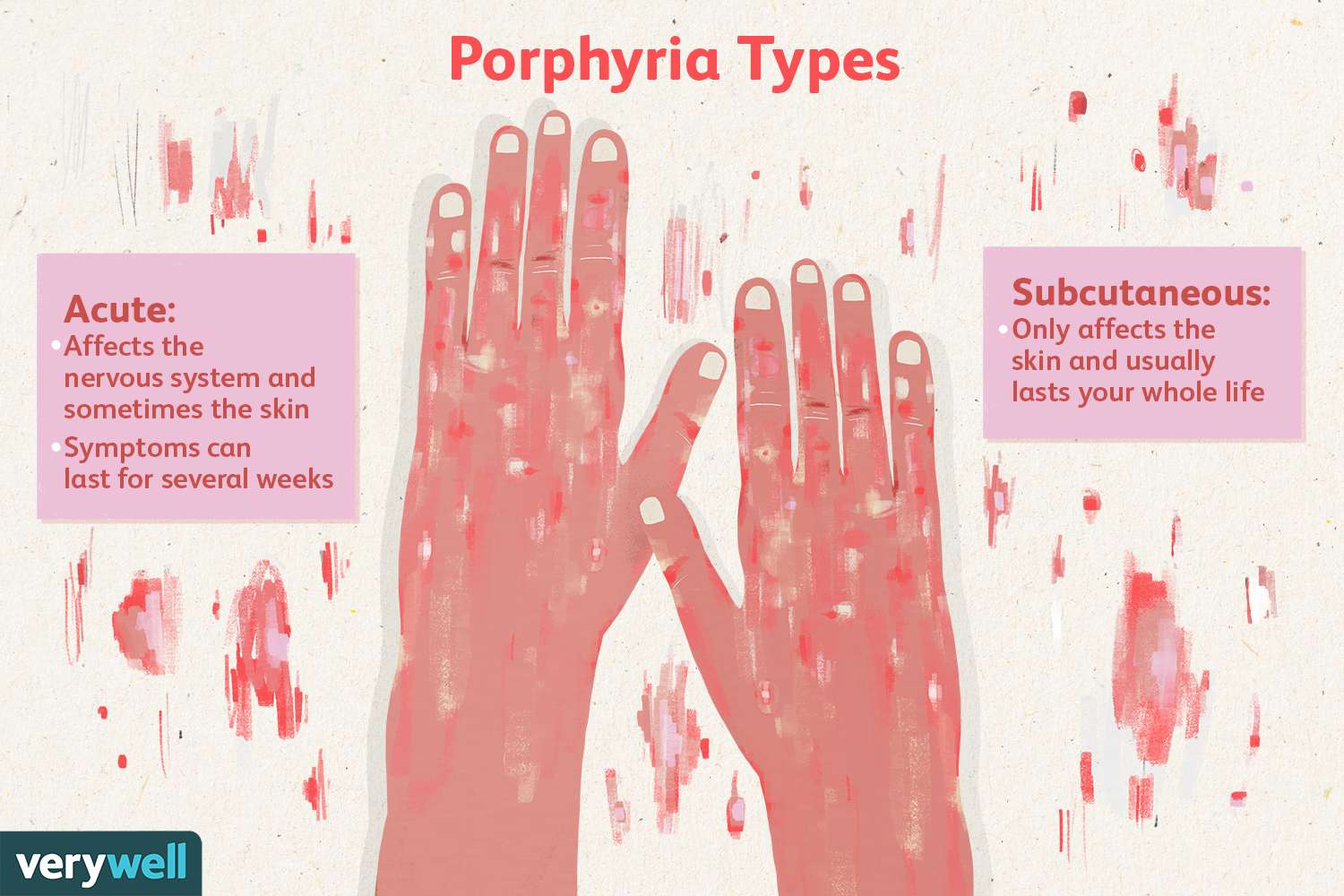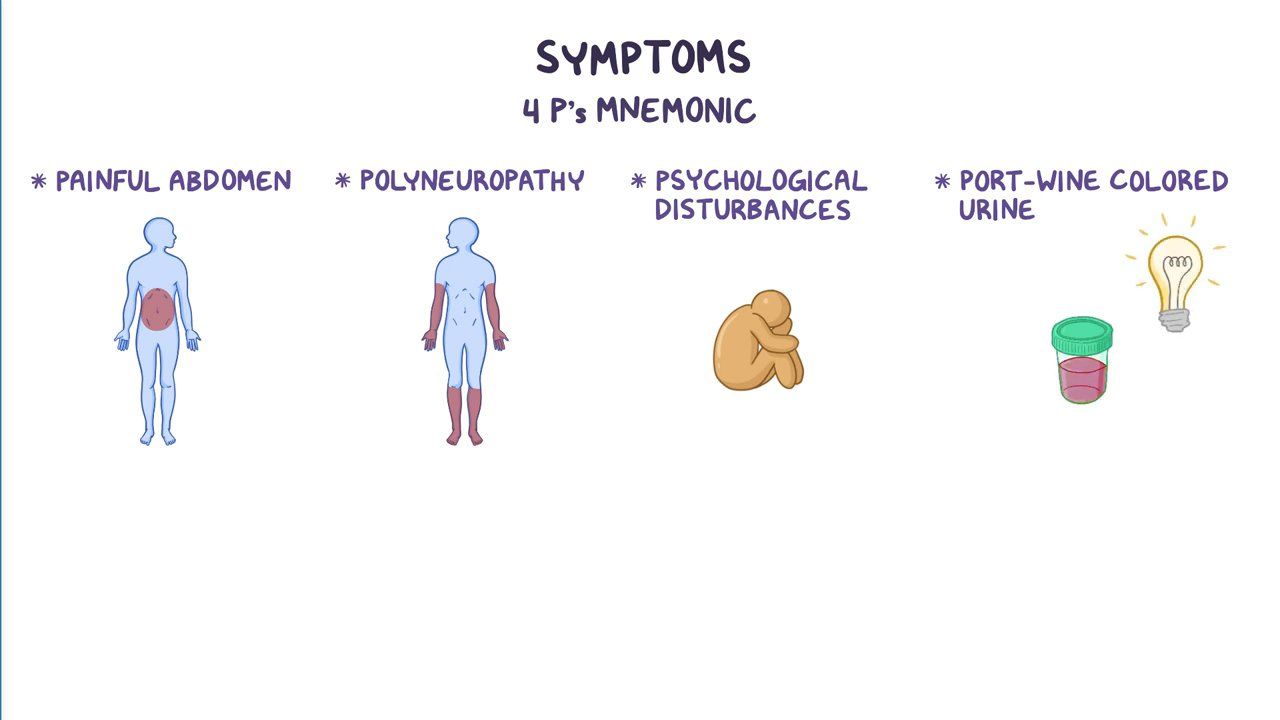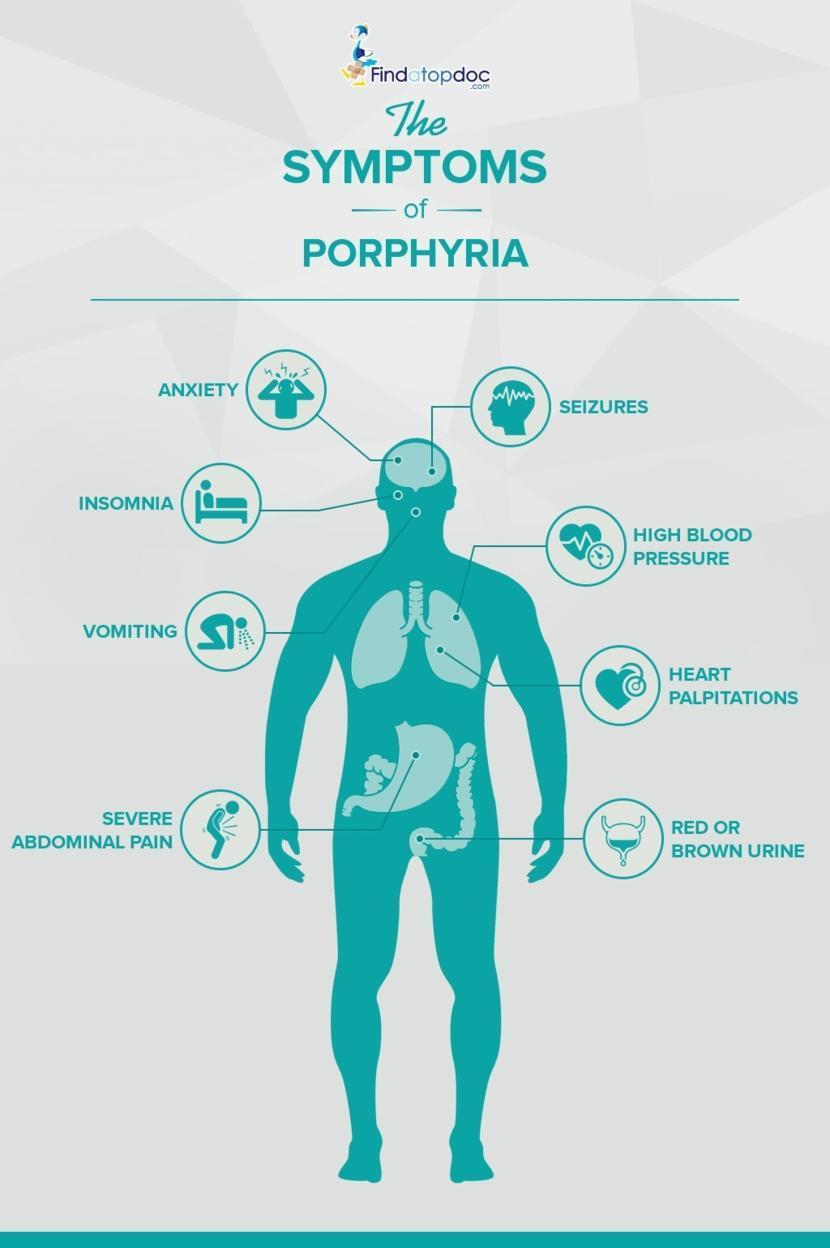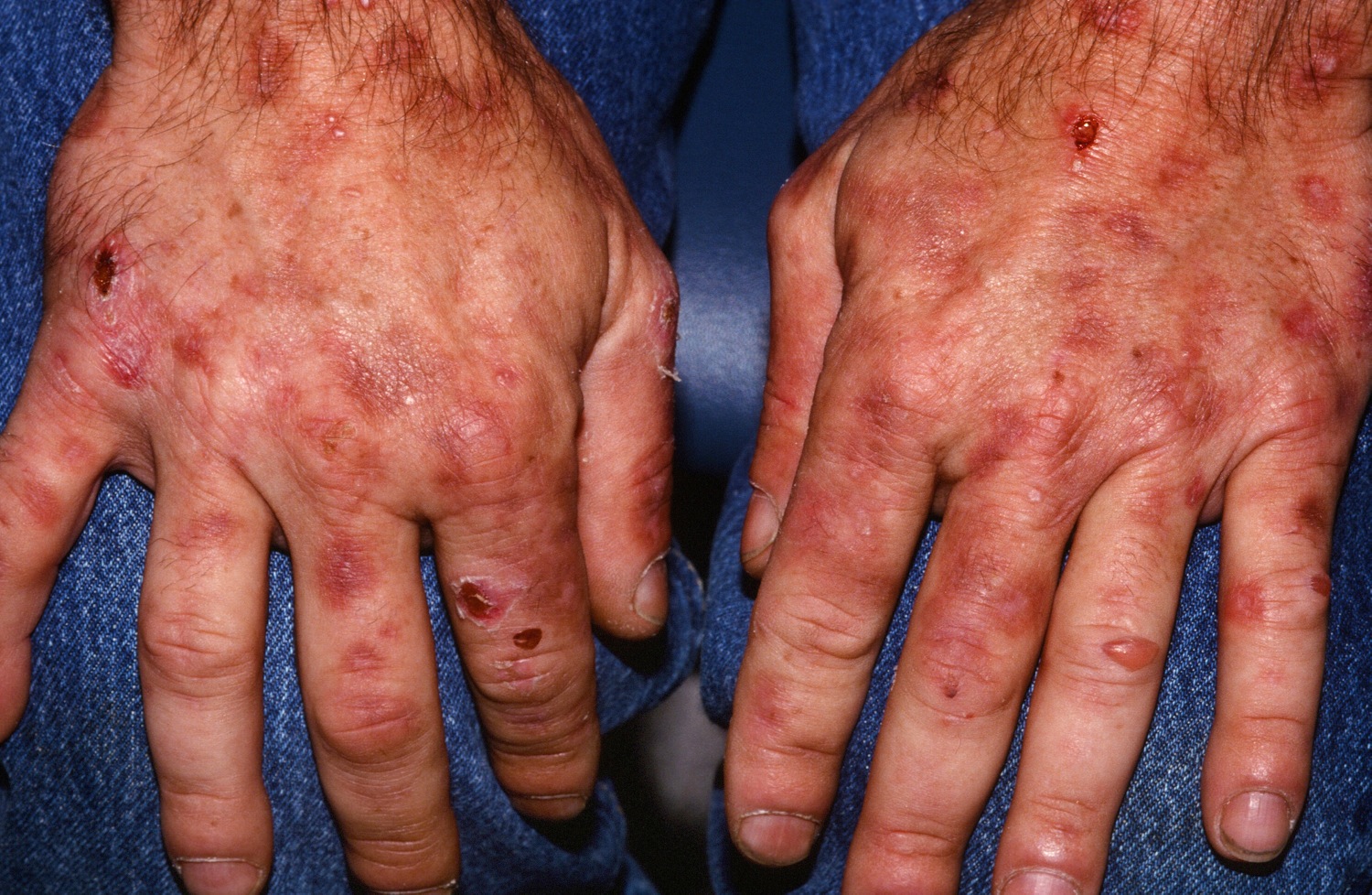
Key facts
- Porphyria is a group of diseases caused by problems with red blood cells that lead to a build-up in the body of chemicals called porphyrins.
- Porphyria is uncommon, and is divided into 2 categories — acute porphyria, which affects the neurological (nerve) system and cutaneous porphyria, which affects the skin.
- Porphyria is usually inherited, but can also occur without anyone else in the family having it.
- Because porphyria can cause so many different symptoms, it can be hard to diagnose.
- Porphyria can’t be cured, but there are many ways to manage and treat it.
What is porphyria?
Porphyria is a group of uncommon diseases caused by problems with red blood cells. The problems cause a build-up in the body of chemicals called porphyrins. Porphyria can cause a wide range of symptoms.
Porphyria types
There are many types of porphyria, which are commonly divided into 2 categories:
- cutaneous — mainly affecting skin
- acute — mainly affecting the neurological (nerve) system
What are the symptoms of porphyria?
The signs and symptoms of porphyria can vary, depending on the type and severity. Some people have no symptoms. Some go for long periods of time without any symptoms, while other people have quite severe symptoms.
The most common symptoms are:
- skin problems, for example, sensitivity to the sun, blistering, discolouration and scarring
- abdominal pain
- muscle weakness
- numbness in the arms and legs
- confusion and seizures
What causes porphyria?
Porphyria is usually inherited, but it can also occur without anyone else in the family having it.
When should I see my doctor?
You should see your doctor if you have any of the symptoms of porphyria, especially if you have been experiencing these symptoms for a while and they are not resolving or getting worse.
How is porphyria diagnosed?
Because porphyria can cause so many different symptoms, it can be hard to diagnose. Your doctor will ask you questions about your symptoms, your family medical history, and will examine you. They will probably want to arrange urine or blood tests as well.
Genetic tests can be useful too.
How is porphyria treated?
Porphyria can’t be cured, but there are many ways to manage and treat it.
Some of the lifestyle changes that can help you manage porphyria include:
- avoiding any medicines or drugs that may trigger an attack — check the list at the Porphyria Association Australia
- avoiding alcohol
- protecting your skin from the sun as much as possible
- eating carbohydrates often
- avoiding strict diets, without first getting advice from a dietitian
Your doctor may also advise you about:
- medication to control pain, nausea or vomiting
- other medicines to reduce the amount of porphyrin in your blood
- regular venesection (also known as phlebotomy or blood-letting) to reduce the amount of porphyrin in the blood.
Can porphyria be prevented?
Porphyria can’t be prevented, as it is a genetic disease.
Complications of porphyria
If an attack of porphyria is not treated it can lead to severe symptoms such as respiratory(breathing) failure, severe neurological (nerve) symptoms like paralysis and seizures and even death.
